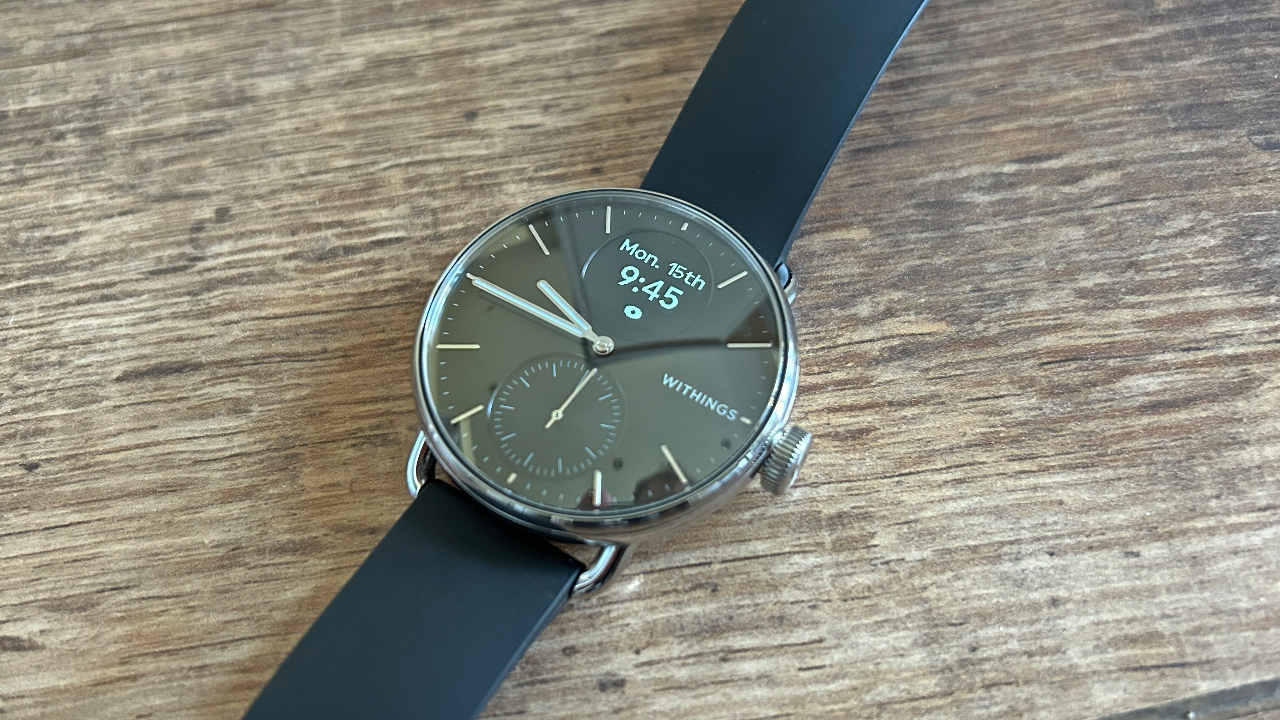
Withings is the dominant force in the hybrid smartwatch market, which is partly because of how good its watches are and partly because it’s a niche market other brands have largely left alone. The Garmin Vivomove range provides rivals, but the style and battery life of the Withings’ watches set them apart.
The Withings ScanWatch 2 is now the top option for those who want a hybrid that combines analogue looks with health and fitness tracking. It’s one of the best fitness trackers available and an upgrade on the original ScanWatch, although that and the ScanWatch Light still have appeal as cheaper options.
Withings ScanWatch 2: Price And Availability
The ScanWatch 2 launched in August 2023 and costs $349.95 in the US and £319.95 in the UK. Withings also has the cheaper ScanWatch Light in its range, which is $249.95/£229.95, though it doesn’t offer the advanced health tracking of the ScanWatch 2. External competition mainly comes from the Garmin Vivomove range, which is cheaper, and better for sports tracking, but not as advanced on the health tracking front.
How I Tested This Watch
I’ve been wearing the Withing ScanWatch 2 for six weeks, tracking all my daily activity and sleep in that period. I have also tested the Withings ScanWatch and a range of the best fitness trackers and best sports watches from other brands.
Design And Hardware
The Withings ScanWatch 2 comes in 38mm and 42mm sizes, with black and white faces with a silver bezel available in both, and then two extra colors in the 38mm: blue with a gold bezel, and sand with a gold bezel.
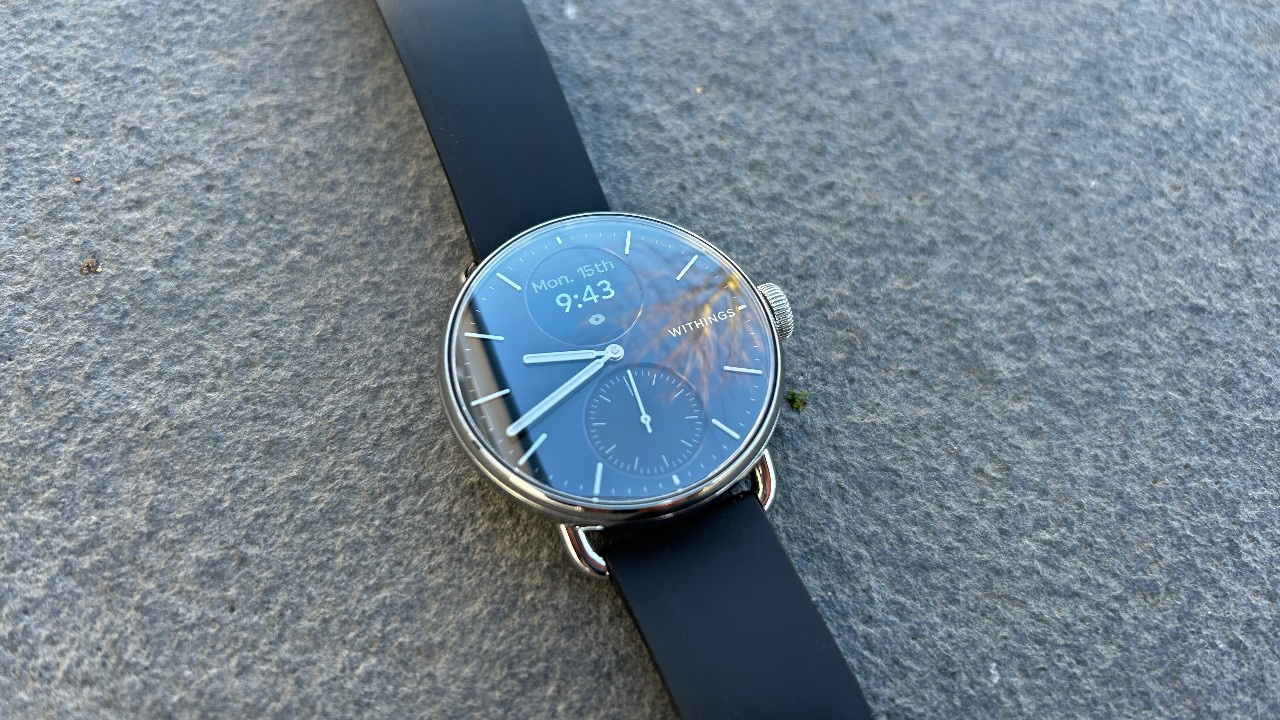
I tested a 38mm watch with the black face and loved its simple, elegant design. It’s small and light, and sits snugly against the wrist. The silicone wristband it came with has been comfortable to wear at all times, including workouts, and there’s a range of bands made from other materials you can buy from Withings and third parties.
On the top half of the analogue screen is a small, circular monochrome screen. This lights up when you raise your wrist or press the button on the watch, and you can scroll through it to see daily activity stats, or start a workout or health measurement, such as an electrocardiogram (ECG). Notifications are also displayed on this screen, but since it is only 0.63in, you’ll be waiting a while for a message to scroll across.
There’s a dial on the bottom half of the watch that shows progress towards your step goal. I’d prefer the option to show progress towards another goal like active minutes or calories, since steps feel a bit old hat, but people do like steps.
The ScanWatch 2 has a 5ATM waterproof rating, so you can be confident taking it swimming or into the shower, and also has a optical heart rate sensor and an altimeter. It can measure your skin temperature, take an ECG and track blood oxygen saturation—features that separate the ScanWatch 2 from the cheaper ScanWatch Light.
Health and Activity Tracking
The ScanWatch 2 tracks steps, calories, elevation and distance throughout each day, along with your heart rate and skin temperature. The skin temperature tracking is a new feature for the watch, and shows your temperature zones during workouts plus variations on your normal baseline, which you can see on a dial on the watch.
There’s more to come here, including temperature zones throughout the day and recovery temperature after a workout, which Withings says will arrive late in 2024. I also hope Withings makes it easier to track the temperature readings over time because it’s not readily available in the app yet. I had COVID while wearing the watch and a fever of 102°F, but I couldn’t see my temperature over time in the app—something I could do when I had COVID while wearing an Apple Watch.
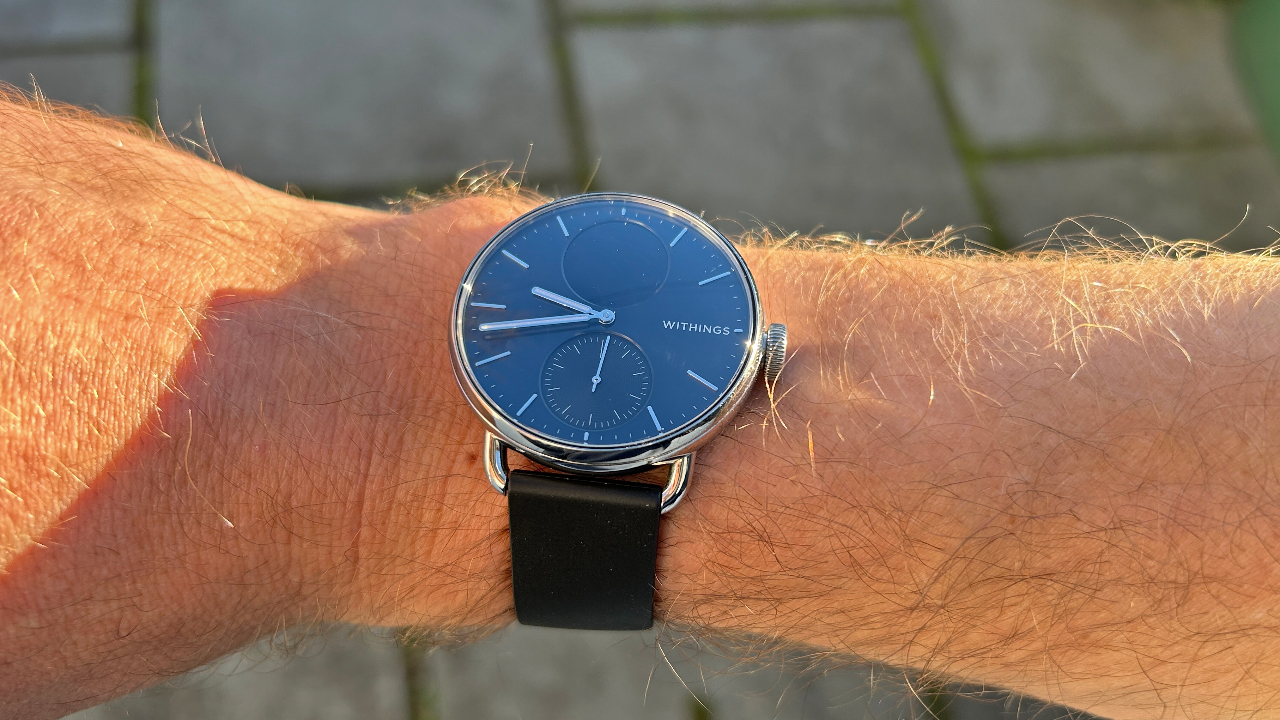
The watch can take ECG and SpO2 (blood oxygen) measurements, and you can set high and low heart rate notifications. Irregular heart rate notifications will also be available in the future, as with overnight heart rate variability. That the watch launched without these features isn’t great, especially heart rate variability, which Withings says has been delayed until the end of 2024. It’s a feature already widely available on other sports watches and fitness trackers.
I found step tracking was accurate on the ScanWatch 2, or at least comparable to the results I got from the Garmin Epix Pro sports watch on my other wrist. The Withings tended to underestimate steps, but not by much.
Sleep Tracking
Aside from the lack of HRV tracking, the ScanWatch 2 is a good sleep tracker that offers plenty of detail on your night’s rest. This includes a graph of your sleep stages and a rating of the depth, regularity and duration of your sleep, as well as seeing your overnight blood oxygen saturation. You can track any breathing disturbances you experience in the night, but turning this on reduces battery life.
It’s hard to be sure about sleep tracking accuracy, but the ScanWatch 2 was hit and miss for me. There were many nights it tallied up well with the reading of an Oura ring, which I rate highly for accuracy, but the ScanWatch 2 regularly overestimated how well I slept. Nights when I was disturbed by my baby, and one when I stayed up late socializing, both got too high a rating, and the night when I had a fever with COVID went untracked by the watch.
The ScanWatch 2 is a good sleep tracker overall, yet the lack of more detailed recovery tracking using HRV is a shame on a health-focused watch such as this. It feels like an area where Withings could compete with the likes of Whoop and Oura, but perhaps it would hit the battery life on the watch too hard to do more comprehensive sleep tracking.
Sports Tracking
You can track workouts on the ScanWatch 2 by starting them manually, which means you can then see live stats during your session, though these are not easy to scroll through and read on the small screen. There’s no built-in GPS for outdoor activities, though if you start the workout on the watch manually and carry your phone with you, it will use your phone’s GPS for distance and pace tracking and provide a map of your activity afterwards. The watch detects and tracks workouts automatically.
The heart rate tracking during workouts was almost always incorrect, unfortunately, especially during runs where the readings were too high compared with a chest strap heart rate monitor.
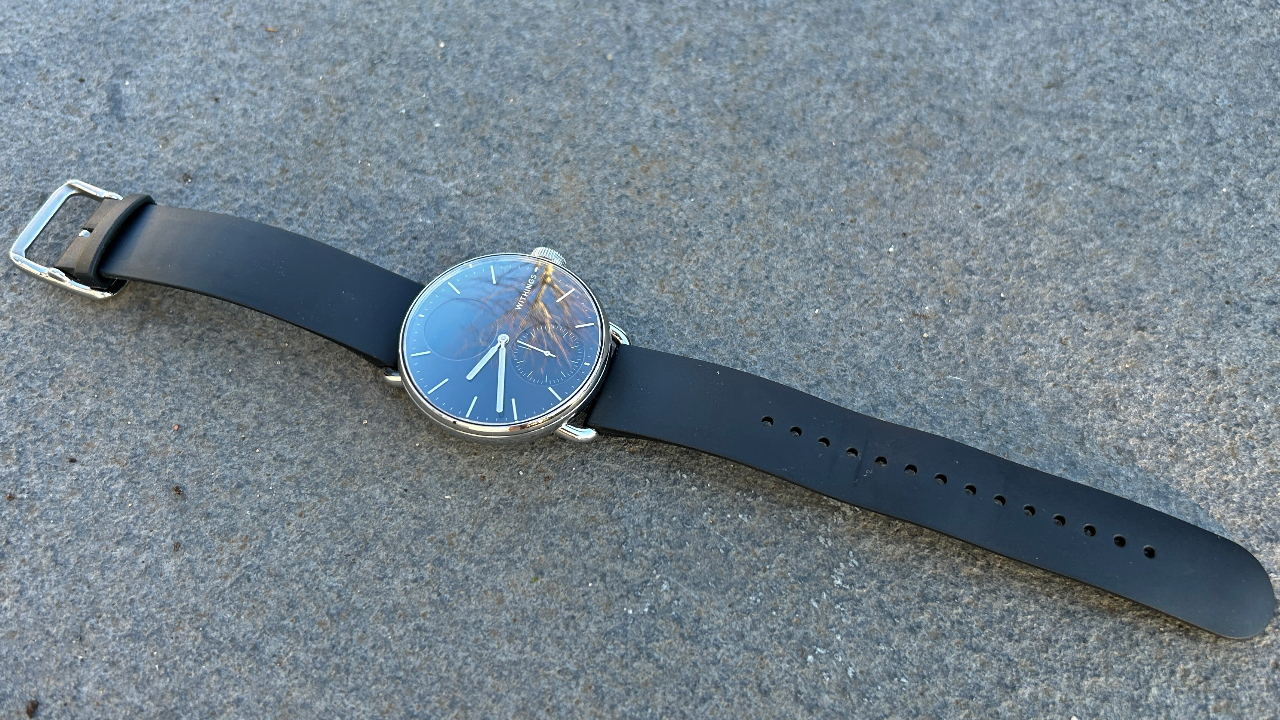
It’s not a watch that keen athletes will use to record and guide their training, because its sports tracking is basic. The automatic tracking is handy to have running in the background as a general record of your activities, though it often said I had gone for a cycle when I’d been pushing a stroller.
You get a VO2 max estimate from the ScanWatch 2, which the watch calls your fitness level, and the body temperature readings during workouts are mildly interesting at first, though I quickly stopped checking them. If I was training in a much hotter country than the UK they may be more useful for ensuring you don’t spend too long in the “high” temperature zone, rather than in the “warming up” or “performance” zones.
Battery Life
Long battery life is a central selling point of Withings’ watches, and the ScanWatch 2 delivers on this front. The 30-day listed battery life seems achievable. I only had to charge it once in six weeks with fairly heavy use—although there are a lot of features that will see that number come down significantly. If you turn on the breathing tracking at night it reduces the battery life, as does turning on notifications with vibrations. If you track a lot of workouts on the watch, rather than using the automatic activity recognition, it reduces battery life to more like 10-15 days, though this is still impressive.
Smart Features
There aren’t many smart features on the ScanWatch 2, which is unsurprising given the small screen and long battery life. You get notifications from your phone and can choose the exact apps that send these to your watch, which is useful, but there are no music controls, NFC payments or even a weather forecast.
Is The Withings ScanWatch 2 Worth It?
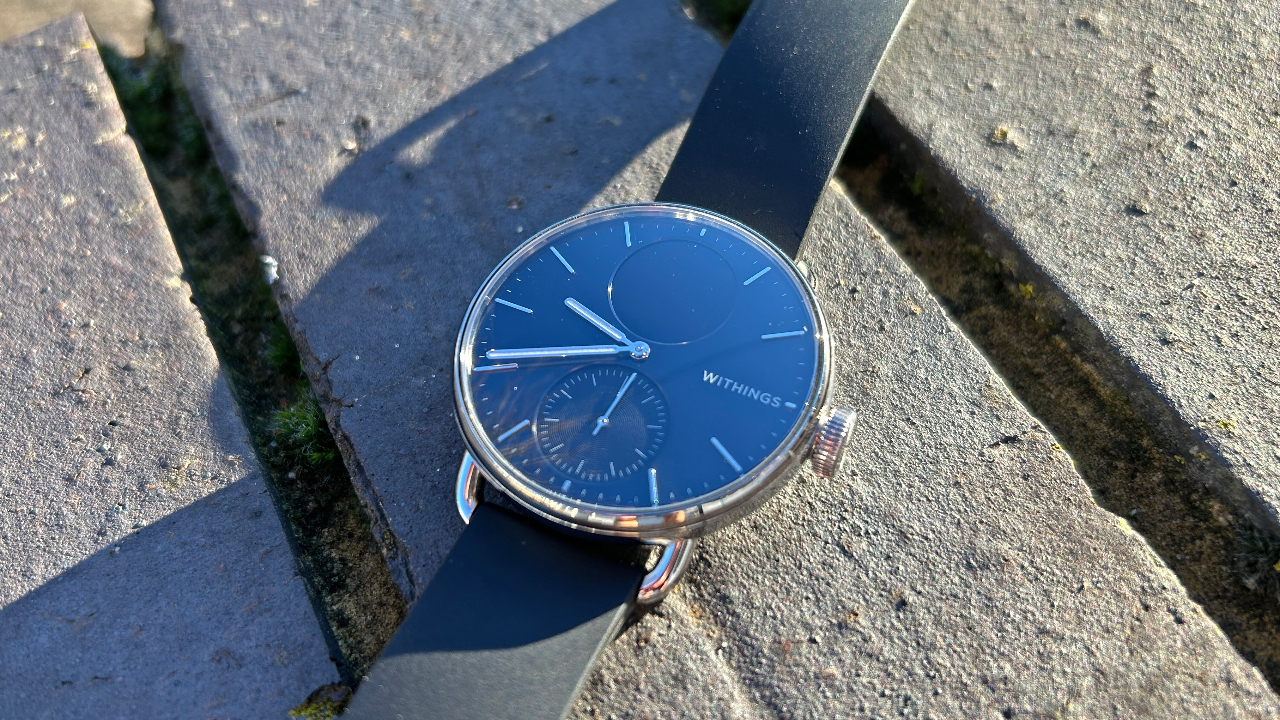
The Withings ScanWatch 2 is the best hybrid smartwatch, but there are cheaper options that offer most of its key features for less, such as the Garmin Vivomove series—which includes watches that are better sports trackers—and Withings’ ScanWatch Light.
Those watches don’t offer the advanced health tracking of the ScanWatch 2, though, which are probably of more use on a hybrid watch than sports tracking. If you want the latter then you’re better off getting one of the best sports watches with a bigger screen and built-in GPS.
It’s a similar story if you want real smarts. The ScanWatch 2 doesn’t get close to matching the features of the best fitness smartwatches, like the Apple Watch Series 9, which has an app store, NFC payments and music storage.
The ScanWatch 2 doesn’t try to compete on those fronts, of course, but it’s just a way to show that it’s a niche watch with appeal only to those who want the analogue look. Within that niche, it’s the best you can get, but it’s not without problems, not least the fact that Withings launched it without many advertised features that have still not arrived on the watch.







